#Isaac Shepard
Explore tagged Tumblr posts
Text
Got around to finally write Isaac Shepard's bio (don't have mods yet but hopefully will soon get some in game shots) but here he is! Hope Joel Kinnaman doesn't get too annoyed at me borrowing his face but he looks exactly how I pictured Isaac. Also submitting this for @theshepcollective ❤️



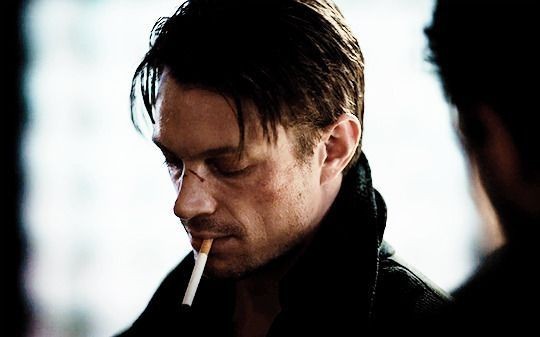

Isaac Shepard
Background: Spacer / War Hero
Isaac Shepard was born in 2153 on the SSV New Delhi cruiser, where both his parents were assigned as executive officers.
Great great grandson of the astronaut Alan Shepard, his whole family has been involved in the military and space exploration since. Isaac spends his childhood following his parents from space station to spaceship, loving the idea of exploring the great unknown still out there and making a real difference.
His parents unfortunately pass away in 2167 in a tragic accident: a rogue celestial object hits their transport shuttle and the whole crew perishes.
His maternal grandparents, Arthur and Sylvia, take him in on the colony of Cyrene, but young Isaac is struggling, and feels trapped on the small colony.
He starts running with some bad crowds and using drugs to cope with his grief, until he is arrested for possession and minor theft when he is 16. He spends a year in juvie and decides to get himself straight once out: he attends his missing exams and manages to enlist with the Alliance at 19. He proves himself quickly on various posts, showing a unique combination of street smarts, strategy and physical skills (aside from biotics with which he struggles with) and even succeeds in getting an Engineering degree.
He quickly ascends the ranks and eventually gets to the level of Lieutenant. In 2176, the Skyllian Blitz happens, a major assault led by pirates, slavers and batarian warlords on the colony of Elysium. Here, along with his squad, he manages to rally the colonists against the batarian attack, and when enemy forces manage to break through the colony's defences, Shepard manages to single-handedly hold them off and seal the breach, leading to the Alliance forces winning the battle.
He gets awarded the Star of Terra and after leading a few successful operations against slavers in the Terminus systems, in 2183 he gets assigned as Commander for the SSV Normandy under Captain Anderson.
Alignment: Paragade (do no harm take no shit)
Class: Soldier (but with Kaidan's help eventually manages to be more proficient with biotics)
Lovers: Reyes Vidal in 2183, then Kaidan Alenko, some other flings along the way
Best Friends: Joker, Garrus, Miranda
11 notes
·
View notes
Text
I remember reading or hearing about a vampire's experience for choosing to stay for the sunrise. I imagine vampires as forest dwellers, hoping to see the world again in sunlight.
I imagine this song is playing for them as they decide to cherish this experience.
They mourn the last few glimpses of the moon and stars they became familar with for centuries. They stand atop a clearing and sit, feeling the grass and rocks as they place their hand on the ground. The small nocturnal animals heading in for the morning as the natural elements continue their dance. Winds flowing through branches. Water flowing through the river over rocks and mud. The world becomes enveloped in sound as the diurnal animals come to life. They see the shades of cyan and yellow begin to stain the once purple sky.
They feel the pain of sunlight hit their eyes for the last time. All that's left in the clearing are their tattered clothes from a lifetime ago; impressions on the grass that will grow over and hide most memories of them.
#diary#personal#mourning#morning#love#excitementt#music#piano#isaac shepard#life#vampires#lore#moon#sky#stars#animals#story#Spotify
2 notes
·
View notes
Text
The ABCs of Mass Effect, according to Reddit

Second place finishers:
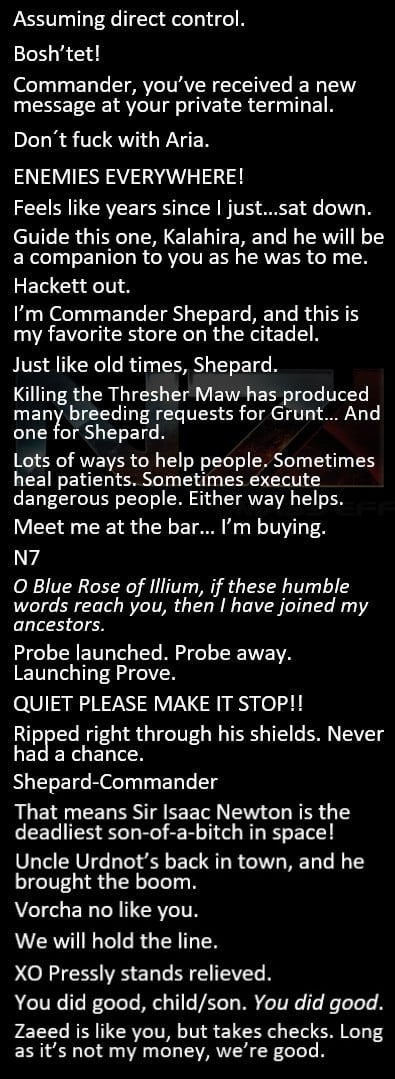
#mass effect#mele#ah yes reapers#big stupid jellyfish#calibrations#emergency induction port#keelah se'lai#that was for thane#assuming direct control#don't fuck with aria#i'm commander shepard and this is my favorite store on the citadel#sir isaac newton is the deadliest sonofabitch in space#commander shepard#urdnot wrex#garrus vakarian#tali zorah#me spoilers#mass effect spoilers#posts that make me smile
425 notes
·
View notes
Text


did this meme of the HL chars in your style!
Replaced Breen with Chell because Chell.
#draggonart#half life#half life 2#gordon freeman#alyx vance#barney calhoun#isaac kleiner#eli vance#the g-man#chell portal#adrien shepard#portal
260 notes
·
View notes
Text

Following yesterday's post, here was the first of a series of photos where these four interact with each other in various scenarios
Orignally posted: October 26, 2013
Figures:
9" Square Enix Play Arts Kai Dead Space 3 Isaac Clarke. Released in 2013
9" Square Enix Play Arts Kai Mass Effect 3 Jane Shepard. Released in 2012
9" Square Enix Play Arts Kai Deus Ex: Human Revolution Adam Jensen. Released in 2011
9" Square Enix Play Arts Kai Halo: Combat Evolved Master Chief. Released in 2011
See other pages from my Toy Photography Photobook
#commander shepard#femshep#adam jensen#master chief#isaac clarke#play arts#mass effect#dxhr#dead space#halo#toy photography#photobook
18 notes
·
View notes
Text

Sari Sumdac's Age Chart & Sumdac/Vakarian/Shepard (2024)
----------
Credit for Helluva Boss goes to to Vivienne "Vivziepop" Medrano & SpindleHorse
Credit for Transformers goes to Hasbro & TakaraTomy
Credit Transformers Animated Series goes to Sam Register & Matt Youngberg
Credit for Mass Effect goes to Bioware
-----------------
[Note: Don't Reblog This Without My Permission, As This Drawing Will Only Be Used For Here & Over At The Place Where I Will Be Using It As a Cover For One Of The Future Chapters Of "The Angel In Disguise"...I do have both the names I go by on this drawing even if "Mythicaldemigoddess-of-deltarune" was what I changed to because of certain reasons that I wont go into right now...and well once again this drawing will be used as a Cover for a future chapter for that story which if I decide to, I might post some chapters of it on here, you know like a Cross-Post...oh and in case the drawing is too small to see properly, please make sure to click on the drawing to make it bigger so it can be viewed a bit more better.]
I do plan to use this as a Cover for a Future Chapter for Falling For The Angel In Disguise…and yeah, some can guess what will be happening to Sari when she turns 24 years old in the story.
(I might of pointed this out before, but I will say it again...
"Falling For The Angel In Disguise" is for Mature Audience Readers Only, which means there be 18+ moments in certain chapters, even though some parts are still technically not fully detailed, even the whole Semi-Ship going on with Swindle x Adult-Sari...and originally Sari wasn't plan to be the main heroine of the story, but ideas change and the original heroine has a different part to play in that story now.)
also I have a new idea on who could truly be Sari's Human Bio-Parents, and well the whole idea can be added in a future Chapter, where the "Good" Doctor Scalpel will look over Sari's DNA and CNA again, and while it does show that she still Megatron's daughter through her CNA side…on her DNA side, it will show that Marissa Faireborn isn't the Mother after all, and it turns out that Sari's Human Mother is Jane Shepard (which is only in a Crossover-Fanon Timeline.)
and Scalpel also finds out about Isaac Sumdac's Other Brother who is his younger twin brother who's name is Ivaan Sumdac who turns out to be Sari's True Human Bio-Father, as he is a 100% match…
so yeah, I tried to make Ivaan as the "Hot Twin", ya know like Stanford "Ford" Pines from Gravity Falls by Alex Hirsch.
and the reason why Ivaan is going to be Sari's Bio-Dad in that Crossover Story, is because he wasn't wearing gloves.
so in a Fanon Timeline, Isaac isn't a only child and might have more than just two siblings, but only one of his siblings is Isaac's twin brother.
it might make sense that Ratchet was made to be Sari's Godfather by either Isaac Sumdac or Ivaan Sumdac, because both Uncle/"Adoptive Father" & Father would know that Sari has a much longer lifespan than them and will likely have the lifespan as other Cybertronians, even if she is half-human.
so knowing they might not live as long to be in her life forever and it being possible they might go before she becomes a young woman, they could have Ratchet be her Godfather…
even though in "Falling For The Angel In Disguise", Sari is a woman now...well womech when you count her being half-cybertronian.
so if anything were to happen to Isaac or Ivaan when Sari was still very young and before she becomes adult…
Ratchet will get Sari, but if anything were to happen to him, then Sari could end up going to one of her Moms, either Jane Shepard or Megatron. XD
also the reason why Sari at Ages 14 to 15 years old is not smiling in this drawing, it's because of her Autobot Friends.
and yeah in "Falling For The Angel Disguise" Sari is given another chance to be a kid again in a Flashback, where she loses only half of her upgrade, so being back to being 8 years old in the type of Flashback…
Sari's robot form is suppose to be much smaller and femling size in the flashback, so since she loses half of her upgrade some where in the past in the story, that meant she got to grow up a bit more and not skip through most of it.
at the moment Sari is 23 years old, but I will have her become 24 years old later on in the story.
the plan is that Sari will still use a type of Imp-Succubus Hybrid Disguise, from when she is still alive as a Half-Human & Half-Cybertronian, to when she becomes a type of Cybertronian-Angel.
Sari doesn't just have a Cybertronian Spark, the idea is that she has a hybrid spark that is half of Earth and half of Cybertron.
her angel wings are energy based, and yeah I'm still going to have Sari's blood type be O RH D Negative. (same as my blood type…) which would also mean that Sari is a Princess, which her being Megatron's Daughter, that would make her the Princess of The Decepticon Empire.
Scalpel could have Team Chaar (that is Strika, Blackout, Cyclonus, Oil-Slick and Spittor) as Sari's "Royal Bodyguards"…. and I want to say, that since Sari wasn't legally adopted by Isaac Sumdac, that means any human or cybertronian can legally adopt her as their daughter.
Porter C. Powell might be a power hungry jerk who tried to take over Sumdac's Company…who I wouldn't be surprised if his Sinner form ends up being a Anthropomorphic Pig with how Greedy he can be.
but Powell might have a good point, Isaac didn't make sure to give Sari some form of proper papers to show she in fact exist, even if he does a bit better than Greg Universe even if both of them are Gray-Parents…
it doesn't excuse him from not making sure she was taking to a Hospital after she was born in his secret lab, that Megatron was in. even if Isaac Sumdac and Greg Universe are still good dads in their own way, but that doesn't mean they are 100% good dads, like they both can be in between being good and bad dads…
which is why they would fall under the Gray-Parenting rank…and even if Isaac knows Sari is half-Cybertronian, he would still view her as still being human and wouldn't say "Sari, your Cybertronian.
your not like other kids!" even when Steven Universe does return, and I hope it does if some info is true…
I hope Greg doesn't just throw the whole "Steven, Your a Gem, your not like other kids." card….I mean yes Steven is Half-Gem, but he is also Half-Human.
I still love Steven Universe Future, and I think Steven had the right to be upset with Greg in one of the episodes, and yeah Greg's parents might had some problems, but there could be more to it than meets the eye…and both Greg and Steven's Grandparents, could both be in the wrong, like Steven's Grandparents not explaining to Greg why they couldn't give him everything he wanted or how they always made him meatloaf…
which maybe having meatloaf once in a while might be okay, but if ya want to spice things up, put some mustard on it and eat it with some other food, like fries.
plus it could still be possible one of or both of Greg's parents had problems with very loud sounds that would hurt them, and Greg could have had a habit with turning the volume of his music up way too loud.
even if one can like to listen to their favorite music really loud, if you have someone either a friend or family who gets hurt by the very loud sound and is in the same room as you, it is best to turn the volume down for their sake.
if I had to guess, it could be Greg's Mom who would get hurt by Greg turning his music too loud, and it would have to be Greg's Dad to tell him or at least try to, to stop it but Greg ends up ignore him and what he tries to tell him. even if Greg might seem like the perfect Dad, but he isn't, I mean he can be perfect in other ways as a Dad, but at the same time he isn't 100% a perfect Dad, maybe around a 95% but not any higher than that…
Greg along with Sumdac, would be Gray-Parents, even if Isaac did some stuff right when being Sari's Father, he might make some mistakes along the way.
like if your a Mom, and you leave your baby who can still walk, end up being watched by your own Mother who is the baby's Grandmother, and the baby ends up getting hurt under the said Grandmother's watch…
and well, I think I had worse than that time when my Grandmother was watching me, but I ended up hurting my hand...
one of the other times I got hurt when I was a baby, was when me and my big brother were playing alone, and I ended up having to go to the hospital cause I got a bad cut close to some corner of my right eye....not sure if I brought that up on here either, but one of the fanfics I'm reading reminds me of it...I love the story, and even if there are still some differences that reminds me of my life, I think I can relate to one of the characters from it a little bit because they remind me of some parts of my life even if the parts of their life is still very VERY super different from my own....and well, maybe I will go into more detail in another post.
I still think if I was born a twin, chances would be I would be the younger twin who would be more like Stocking Anarchy, and my older twin sister would be like Panty Anarchy...
plus we would both be Defective Earth Angels, who don't exactly work 100% like other Earth Angels and know there is something seriously messed up with the Patriarchy because of that whole Toxic-Masculine thing...
Toxic-Feminine is still a problem too, but it isn't as dangerous or as high as the Toxic-Masculine that has been around for like many centuries...
I think I want to have Sari be a type of Gaea Follower instead of being a full on follower of Primus.
you know, some Female Transformer who is suppose to be in the Earth, plus if Gaea was part of both TFA and Earthspark, she would be Omni-Mom to both Sari, Dinobots, Wreck-Gar, Soundwave (who I'm still going to view as a separate one from the Cybertron-Born Soundwave who will be known as Soundwave Sr. and by his other name Soundblaster.), Constructicons and Sumdac's Robots.
Gaea could be known as Mom-2 to The Terrans: Twitch, Thrash, Jawbreaker, Nightshade and Hashtag.
I mean, when you think about it, Primus is kind of a terrible Omni-Dad in the TFA Timeline...it's not like he tries to stop the Autobots from misusing the living metal in Cybertron, or stop them from taking over still inhabited organic worlds that they end up Cyber-forming for Cybertronian life...and the Autobots have more planets than the Decepticons, if that doesn't tell you something is up...
another reason why Primus wasn't in the Transformers Animated Show, because a certain someone who was working on the show with the others, didn't like him...but no matter if ya like him or not, and no matter if he is kind of a terrible dad, he is still a important character in the Transformers Multiverse.
if Adult-Sari was helping her Autobot Friends Fight Megatron and his Decepticons all while a type of Ethereal Smaller Avatars of Primus, Gaea and Unicron are watching...
Sari who already knows that the Autobots who are much higher rank and run Cybertron and who don't tell the Autobots of lower-rank about them Cyber-forming organic worlds that already have organic life on them (and that is why the whole Optimus, Sentinel and Elita-1 were not allowed on organic worlds, because they would of found out the truth...) and the fact that the Autobots have more planets than the Decepticons because the Autobots make sure to push them back and keep them in The Decepticon's Territory...
Sari could figure out that both sides are in the Gray, and the Decepticons could be better if they tried a different path to try to stop the corruption on Cybetron, which I believe is thanks to Megazarak who disguised himself as Ultra Magnus...
one of the other problems Sari could see, can have to do with Primus.
and Sari could stop fighting whichever Decepticon she was fighting and walk over to where Primus, Unicron and Gaea are.
then Sari could point to Primus while yelling out
"Your a Terrible Dad, Primus!!!"
Primus could be shocked, Unicron could snort from trying to hold back his laugh, and Gaea could be all like "That's My Girl!" as she is so proud of Sari for speaking up like that.
plus if you think about it, in theory Sari could be technically a Demi-Goddess, and the reason why Megatron was possibly able to have Sari in that secret lab was probably The Cybertronian Goddess Gaea's doing...even though Megatron may have been in a stasis coma at the time and there was a 50 Stellar Cycles limit on how long Megatron could be separate from his body...you know like Zim and the rest of the Irkens and their Pak, of course their time limit isn't as long as Cybertronians...
plus in a Crossover Fanon Timeline with Transformers, Hazbin Hotel and Helluva Boss...
since Isaac Sumdac (and Ivaan Sumdac before he goes missing.) was using Megatron and reverse engineer his technology by taking some of the parts from Megatron's head, all while Megatron was still in his stasis-coma and still technically alive...
that might end up sending Professor Isaac Sumdac to Hell...
like picture his shock when he realizes he is in Pentagram City and not in Heaven, even if he still has some good points from his life...
but the whole taking parts from a still living being, even one like Megatron, still ends up making the bad points higher than the good points....even the points where Isaac Sumdac takes credit for Soundwave's creation, yeah Powell made the Sound-Wave copies, but Professor Sumdac wasn't the one who designed Soundwave.
if Isaac did have a twin brother, it could of been his twin brother who I'm still going to call "Ivaan" who found Megatron, NOT Isaac.
the brothers could of built their robotic empire together, and Ivaan was the one who was against taking parts from Megatron's head and wanted to find a humane way to reverse engineer the technology, by making a scanner that would scan the robot head and tell what is inside it and how it works.
Isaac however, goes against his brother's wishes and takes some parts from the robot head anyway, and that is why Megatron's head looks the way it does while in Sumdac's Secret Lab.
and not everyone has to agree with it, but how could Sari's protoform baby self absorb any of Isaac's DNA when he was wearing gloves...?
the reason why the Maximals and Predacons from Beast Wars were possibly able to get some samples of DNA for their disguises, might have to do with there was nothing preventing the access to the DNA needed for those disguises, the T-Rex Skeleton that Predacon Megatron, was easy for the scanners to pick up and scan, even the other lifeforms that were still very much alive.
Isaac may have got a shock and was out cold because of it, but it could be possible that if he did have a twin brother called Ivaan, he would of found his brother out cold on the floor and saw the protoform, and while not wearing gloves himself, ends up touching the liquid metal body and it ends up absorbing his DNA.
so yeah, it is also a Fan-Headcanon Theory I have...
that Isaac Sumdac has a twin brother who ends up going missing under mysterious reasons, possibly when Sari was 1 or 2 years old.
and Isaac is really Sari's Uncle, while Ivaan (Isaac's twin brother) is her true biological human father.
and in a Crossover with Mass Effect, Ivaan could be Jane Shepard's Ex-Husband, and she was with Ivaan Sumdac when they found Isaac on the floor and unconscious, and Jane wasn't wearing gloves either and both her and Ivaan touched the protoform sparkling at the same time and then Sari came to be...and well like Isaac, the two end up getting a shock as well and go unconscious, but they could wake up much sooner than Isaac did because they both got half of the shock, like the shock that was given to Isaac, was instead split between the two of them, so they were only out for a short while and woke up before Isaac did.
also I have a theory that the Cybertron from the Beast Wars Cartoon, is really a Future version of Earth, which could explain the Organic Core and the Fossils in Beast Machines.
that Cybertron is "Cybertron II" and it was Earth.
not everyone has to agree about that theory, but it could be possible that the Cybertron from that universe and timeline is in fact Earth having been Cyber-formed and some Humans had been lucky to leave and went to another galaxy and called a new Planet home that was similar to their original world...
anyway there is another Crossover drawing that has Adult Future Sari in it, along with some other characters as well...
I will post it up in a little bit, right after I eat some powder doughnuts and check out some fan art on here. :)
#do not reblog without permission#crossover fanart#transformers fanart#transformers animated#tfa fanart#helluva boss fanart#mass effect fanart#sari sumdac#isaac sumdac#twin brothers#ratchet#jane shepard#john shepard#shepard clone#garrus vakarian#fizzarolli helluva boss#asmodeus helluva boss#january 2024
18 notes
·
View notes
Text
And you will call Him Jesus
#the son of david a prophet like moses named after joshua who crushes His enemies like samson with his death a sacrifice like isaac a shepard#like jacob a redeamer like boaz he who makes happy like judah
23 notes
·
View notes
Note
#teamIsaacs Isaacs did nothing wrong
You are 100% correct. Isaacs was totally in the right. Sam was a stubborn, arrogant hothead with a chip on his shoulder, positive he was right and everyone else was wrong, and Isaacs booting him from the N program was a squandered chance to learn some humility.
It was important to me that Isaacs be an extremely competent, well-respected leader of the N program, and not some power-tripping prick. Their dislike of Sam isn't about pettiness or ego. It's about believing Sam wasn't N material and being overruled by backroom politics, when at the time, Isaacs was right.
Lucky for everyone, Sam figured his shit out, but nothing will change the fact that Isaacs got kneecapped by a privileged kid's mom, and they have every right to never really get over that.
Seeing that snot of a kid earn N7 had to be painful, and the fact that Isaacs can admit out loud that Sam turned out to be a good soldier worthy of the designation is a testament to their integrity.
I am definitely on #TeamIsaacs <3
29 notes
·
View notes
Text
N7 Month DAY 7- "Free Space"
I chose redemption as my prompt/theme.
A story about a cured, but permanently scarred Jack Harper as he faces his demons of the past, and overcomes the pain of guilt and degradation with adoration and support of an unlikely ally.
Hackett x Harper ( main love story, very gentle but explicit) Zaeed x Isaac Shepard, Isaac x Jack and an OC Cerberus General x Jack.
MATURE READERS ONLY!
#jackett#n7month#admiral hackett x jack harper#steven hackett x jack harper#isaac shepard oc#male shepard x jack harper#oc cerberus general x jack harper#male shepard x zaeed massani#m/m#mass effect fanfiction#mass effect art
6 notes
·
View notes
Text
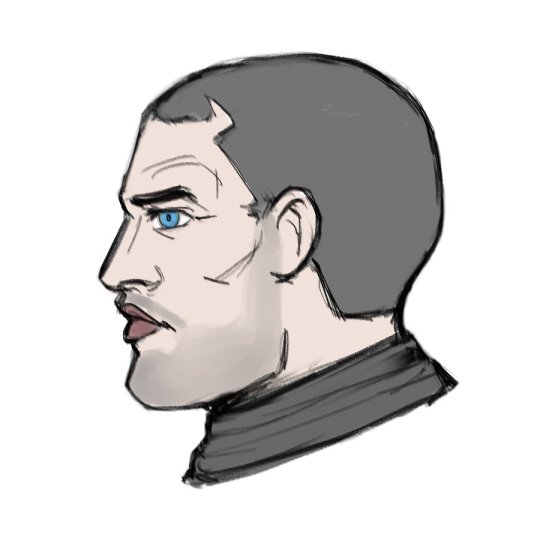
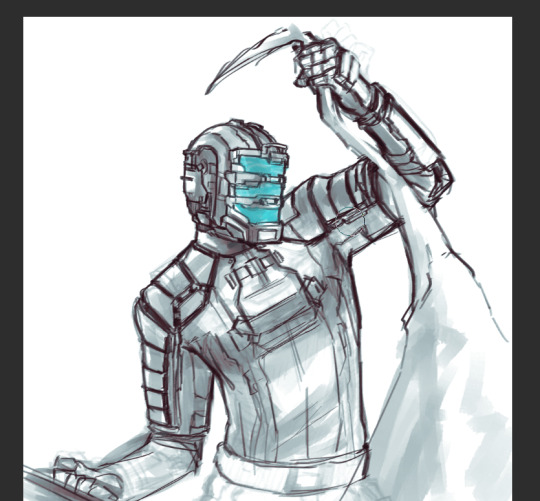

I have so much WIPs but no have a time...
Sorry guys ;_;
20 notes
·
View notes
Text
Ted Lasso Characters as Dogs
This is for @royjamierot
I also posted this on twitter in case anyone is curious.
These are my picks for the Ted Lasso Characters as dogs and I will be taking zero notes
Jamie Tartt - Jack Russel Terrier


Roy Kent - German Shepard


Dani Rojas - Calupoh


Sam Obisanya - Black Lab


Richard Montlaur - Borzoi


Jan Maas- Dutch Shepard


Colin Hughes - Corgi
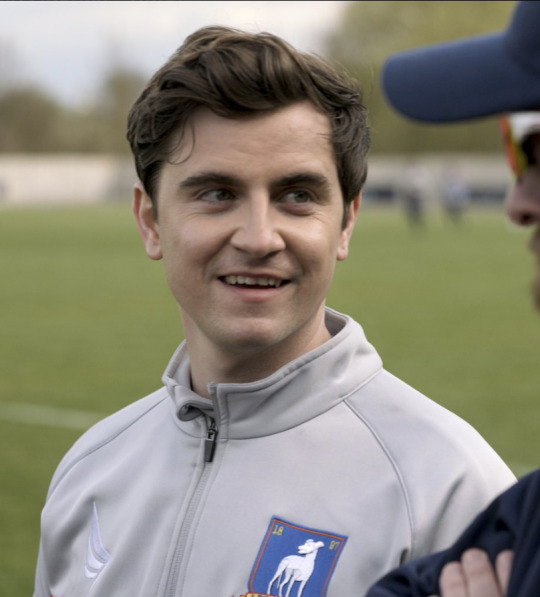

Isaac McAdoo - Rottweiler


Ted Lasso - Yellow Lab


Coach Beard - Irish Wolfhound
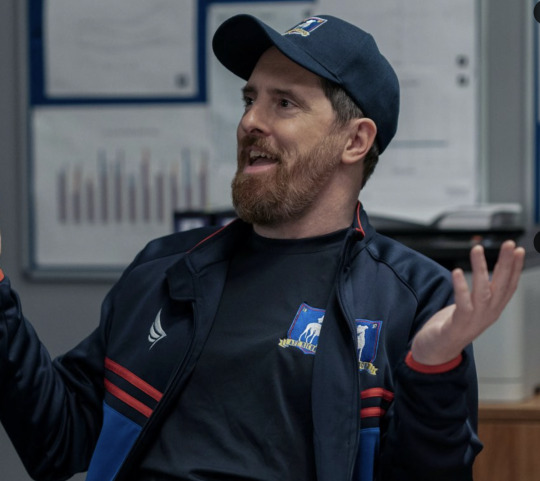

Will Kitman - Papillon
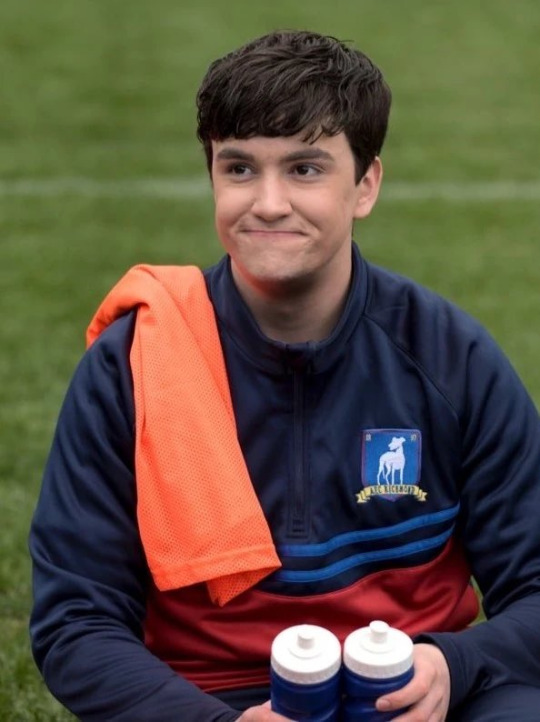

Trent Crimm - Bloodhound


Keeley Jones - Poodle


Leslie Higgins - Dachshund
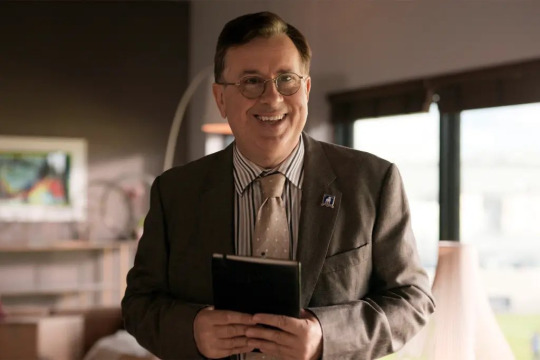

Rebecca Welton - Of course is a cat, specifically Duchess from Aristocats


Obviously I was joking lmk what you think
#ted lasso show#Jamie Tartt#Roy Kent#Dani Rojas#Sam obisanya#Richard Montlaur#Jan Maas#Colin Hughes#Isaac McAdoo#Ted Lasso#Coach Beard#Will Kitman#Trent Crimm#Keeley Jones#Leslie Higgins#Rebecca Welton
507 notes
·
View notes
Text
Official press release
FIRST ANNOUNCEMENT OF WORLD PREMIERE OF NEW BROADWAY MUSICAL
TONY AWARD WINNER JONATHAN GROFF IS BOBBY DARIN
IN
JUST IN TIME
under the Direction of Tony Award Winner Alex Timbers
BROADWAY'S CIRCLE IN THE SQUARE THEATRE TO BE TRANSFORMED INTO
AN INTIMATE, IMMERSIVE NIGHT CLUB featuring a live on-stage big band
Book by Tony Award Winner Warren Leight and Isaac Oliver
Music Supervision and Arrangements by Andrew Resnick
Choreography by Shannon Lewis
Developed and Directed by Tony Award Winner Alex Timbers
Opening at Broadway's Circle in the Square Theatre Wednesday, April 23, 2025
Previews begin Friday, March 28, 2025
Priority Access Pre-Sale begins Monday, October 21, 2024
For Priority Access Visit www.JustInTimeBroadway.com
General on-sale begins Wednesday, October 23, 2024
Exclusive Night Club Floor Seating Available
(New York, NY, Wednesday, October 9, 2024) – Producers Tom Kirdahy, Robert Ahrens and John Frost announce Tony Award winner Jonathan Groff's (Merrily We Roll Along, Hamilton) return to Broadway as Bobby Darin in the world premiere of the new musical JUST IN TIME. Developed and directed by Tony Award winner Alex Timbers (Moulin Rouge), Broadway's Circle in the Square Theatre will be transformed into an intimate, immersive night club where the great American entertainer's meteoric journey - from soaring highs to crushing lows – is brought to life by Groff, a cast of 16, and features a live on-stage big band performing Bobby Darin's iconic hits including "Beyond the Sea," "Splish Splash," "Dream Lover," and "Mack the Knife." Full casting and creative team for JUST IN TIME to be announced soon.
JUST IN TIME has a book by Tony Award winner Warren Leight (Side Man) and Isaac Oliver (Intimacy Idiot, "The Marvelous Mrs. Maisel"), music supervision and arrangements by Andrew Resnick (Parade), choreography by Shannon Lewis (Fosse–Performer/Radio City Music Hall–Choreographer), and is based on an original concept by Ted Chapin. JUST IN TIME will open Wednesday, April 23, 2025, at Broadway's Circle in the Square Theatre (235 West 50th Street), with previews beginning Friday, March 28, 2025.
Producers Tom Kirdahy, Robert Ahrens and John Frost say, "We are honored to celebrate the legacy of the great Bobby Darin with the inimitable Jonathan Groff under the visionary direction of Alex Timbers. Just in time indeed!"
"Bobby Darin worked across many genres of music, but he was most alive performing in intimate nightclubs," says director Alex Timbers. "And so, it was vital to Jonathan and myself that we stage Just In Time at Circle in the Square. This is where we could build an environmental nightclub setting including a live, onstage big band that will allow the same sort of intimacy and electrifying audience connection that both Bobby and Jonathan are known for."
"Bobby Darin was a supernova. He blazed his way through every corner of the entertainment industry, but his enormous talent, charisma, and pure genius were most on display when he was letting it rip in front of a crowd. This primal passionate love affair he had with the audience was the inspiration for our show's conceit," says Groff, who is also serving as a producer on the project. "Alex Timber's distinctive ability to make going to the theater an unforgettable event and Bobby's signature musicality and explosive fleeting life make Broadway the perfect place to experience the story and essence of this once in a lifetime talent."
Last season Jonathan Groff won the Tony Award for Best Performance by a Leading Actor in a Musical for his performance as Franklin Shepard in the Tony Award-winning production of Merrily We Roll Along. Other Broadway credits include Hamilton (Tony Nomination, Grammy Award), Spring Awakening (Tony Nomination), and In My Life. Off-Broadway credits include Merrily We Roll Along (Outer Critics Circle Award), Little Shop of Horrors (Outer Critics Circle Award), Hamilton, The Submission, The Bacchae, The Singing Forest, Prayer for My Enemy (Obie Award), Hair, and Spring Awakening. TV and film credits include "Mindhunter," "Looking," "Glee," Hamilton (Emmy Nomination), Frozen and Frozen II, The Matrix Resurrections, and Knock at the Cabin.
With performances beginning Friday, March 28, 2025, tickets for JUST IN TIME start at $99 and will be available at www.JustInTimeBroadway.com for performances through Sunday, July 27, 2025. JUST IN TIME Priority Access Pre-Sale begins Monday, October 21 at 10am, with general on-sale beginning Wednesday, October 23, at 10am. For JUST IN TIME Priority Access pre-sale code please visit www.JustInTimeBroadway.com. Exclusive Night Club floor seating available for an up close and personal experience. During previews the playing schedule for JUST IN TIME is as follows: Monday through Saturday at 8pm, with matinees Saturday at 2pm. Please note: There will be no performance on Thursday, April 24. Beginning April 25, the playing schedule for JUST IN TIME is as follows: Tuesday and Thursday at 7pm, Wednesday, Friday and Saturday at 8pm, with matinees on Wednesday, Saturday, and Sunday at 2pm. Circle in the Square Theatre box office opening date, rush policy and other accessible pricing initiatives will be announced at a later date.
Look out, Jonathan's back! Tony Award winner Jonathan Groff returns to Broadway as Bobby Darin, the legendary singer whose short but remarkable life took him from teen idol to global sensation, inspiring generations of performers who followed. JUST IN TIME is an exhilarating new musical that immerses audiences into an intimate, swinging nightclub complete with a live big band, a stellar ensemble cast, and a parade of Bobby Darin's hits including "Beyond the Sea," "Mack the Knife," "Splish Splash," and "Dream Lover." Discover the man behind the music who pushed back against the record labels to chart a new course for himself on the charts – a once-in-a-lifetime talent who knew his time was limited and was determined to make a splash before it was too late.
For more information please visit: www.JustInTimeBroadway.com.
Follow us at @JUSTINTIMEBWAY.
16 notes
·
View notes
Text
G2HGE Part 1 : Canon-Gleaning - Post 6a : How Much Faster Than Light ? (Speed, Acceleration and Inertia, and Speculation Thereof)
Hi ! This post (???? 202X ----ERROR : Insert Date Here) is the sixth post in the Galactic Geography and History of Galactic Exploration series (or G2HGE, announced and explained with excessively verbose details here). In this chain of posts, I air out my thoughts and hypotheses on the geography of the Milky Way in the Mass Effect setting - in particular, in order to determine when the various mass relay-centered clusters were opened and accessible, based on what canon data we have. I tell you what I think, and you tell me what you think of that.
A long time ago, I did a five-part post on the various regions of the Milky Way. It was fun !
Right here, right now : How fast are starships in the Mass Effect universe ? Isaac Newton ? Why are there interludes on acceleration and inertia ? What are the constraints of FTL travel ? Do we have any indication as to the evolution of FTL travel throughout history ? What is that about constant acceleration ? Those questions will eventually lead us to what really interests me : How would all of that impact the development of clusters ?
1 - How fast are starships in the Mass Effect universe ?
You know me ; the questions we'll be asking are : What's the data in canon ? How can we complicate the picture ?
The major indication we get on FTL speeds is from a comment in ME1, when Ashley reacts to Shepard admiring her for making the trip from the Czarnobóg Fleet Depot to Amaterasu : "It was only a dozen light-years. Like a day's cruise. It's not like I was going to Earth or something." The phrasing suggests people expect to travel more than a day if they're travelling.
Moreover, Ashley tells us that Czarnobóg and Amaterasu are in the same cluster, and what being "a dozen L.Y. away" represents to the average person : "Close enough to talk regularly, too far to make it back in an emergency. I couldn't afford a fast packet flight."
(To keep you from wondering : a packet flight would be a starship travelling at regular intervals between two ports ; historically, a packet boat or a steam packet refers to boats that did so to convey mail from one port to another.) (In a cut ambient conversation from ME1, extracted by @lyricsaboutcats,the salarian businessman Rulamin mentioned trying to get "a packet" from Noveria to Ryskos to a friend, then finding that it won't be possible to get "a packet flight" for at least six days.)
(The mention of a "fast packet flight" suggests that you have a range of options among packet flights : presumably, the faster ones are more expensive.)
To provide a sense of perspective, the Tempest, which benefits from using "several once-proprietary technologies" and "[not] being weighed down by heavy armor or a main gun", has an "average speed" (see below) of 13 light-years per day, making it "easily the fastest ship in her class", i.e. a frigate-sized survey ship. Given that lighter starships can accelerate to greater FTL speeds than more massive ships, with the fastest military ships being frigates, as well as the unique conditions that made the Tempest possible, I find it probable that the Tempest is one of the fastest ships ever made by the current Citadel species. It is certainly faster than the heavier Normandy SR-1 or SR-2.

The Reapers "can travel nearly 30 light-years in a 24-hour period". This is "more than twice the speed of Citadel ships", in keeping with what we've outlined above. In addition, this sets a very hard upper limit : at the moment, there is no Citadel ship which can reach a speed virtually or absolutely equal to 15 light-years per day (which would be exactly half the estimated Reaper speed).
2 - Which starships are the fastest in the Mass Effect universe ?
In canon, there are at least two factors which have an impact on a starship's speed : its thruster type (or how much motive power they can have, given that starships "use their sublight thrusters for motive power in FTL") and its mass (or how much eezo and power is required to move the damn thing).
The Codex is fairly clear that a starship's speed depends on its type and what thrusters it has ; there are "several varieties of thruster, varying in performance versus economy" :
"All ships are equipped with arrays of hydrogen-oxygen reaction control thrusters for maneuvering." Note that those are "liquid hydrogen/liquid oxygen reactions", not gas. From my own research, I found that the exhaust velocity of a rocket flame usually is several thousands of meters per second.
"Ion drives electrically accelerate charged particles as a reaction mass. They are extremely efficient, but produce negligible thrust. They are mainly used for automated cargo barges." The noble gas xenon appears to be the propellant of choice, in keeping with real life, as there is evidence that it is harvested specifically for ion drives on the planets Alingon, Uzin (in the Eagle Nebula), and Venture, and logically elsewhere. Per my research, the exhaust of an ion drive would be an order of magnitude faster than a chemical rocket's.
"The primary commercial engine is a "fusion torch", which vents the plasma of a ship's power plant. Fusion torches offer powerful acceleration at the cost of difficult heat management. Torch fuel is fairly cheap: helium-3 skimmed from gas giants and deuterium extracted from seawater or cometary bodies. Propellant is hydrogen, likewise skimmed from gas giants." If I can trust my own research, the exhaust velocity of a torch drive would supposedly be measured in thousands of kilometers per second.
"In combat, military vessels require accelerations beyond the capability of fusion torches. Warship thrusters inject antiprotons into a reaction chamber filled with hydrogen. The matter-antimatter annihilation provides unmatched motive power. The drawback is fuel production; antiprotons must be manufactured one particle at a time. Most antimatter production is done at massive solar arrays orbiting energetic stars, making them high-value targets in wartime."
Finally, in 2185, some cutting-edge technology like the Helios Thruster Module uses "metastable metallic hydrogen" both as a superior alternative to "liquid H2/O2" reactions powering "maneuvering thrusters", as well as a slower but cheaper viable alternative to antiprotons for "forward impulse".
Since the fusion torch is the primary engine type in the setting by the time ME1 rolls, we can conclude that the fusion torch allows the average Citadel spaceship, including military starships when out of combat, to travel at a cruising speed around 12 light-years per day (24 Earth hours) - "cruising speed" being defined as "the maximum speed at which a vehicle is able to travel continuously and comfortably, without using a large amount of fuel or effort". In other words, starships can in all likelihood reach FTL speeds faster than 12 ly/day, but that isn't meant to happen, as they are not designed for that, and doing so would a) make the trip uneconomical, and/or b) start damaging the ship.
The other significant limit is the mass of the starship, as "[the] amount of eezo and power required for a drive increases exponentially to the mass being moved and the degree it is being lightened. Very massive ships or very high speeds are prohibitively expensive." What is in bold suggests that mass relates to the mass effect field in two ways : it appears that the more massive an object, the harder it is to affect it ; and that the lighter one wants to make an object, the more eezo and electricity one will need.
This is apparent in the various weights of large military vessels : a dreadnought needs to be as long and massive as possible to bring the greatest firepower to bear, resulting in ships ranging "from 800 meters to one kilometer long" and weighing "millions of tons" - but this mass results in low maneuverability and the slowest speed. By contrast, frigates are the lightest and smallest large military starships, the only large vessels "able to land on planets" ; as a result, they "achieve high FTL cruise speeds because of their high-performance drives. They also have proportionally larger thrusters and lighter design mass, allowing them greater maneuverability. In combat, speed and maneuverability make frigates immune to long-range fire of larger vessels."
Given that cruisers appear be to the standard for military starships, balanced between frigates (faster, but with far lower offensive and defensive capabilities) and dreadnoughts (far more destructive and tough, but slower), it may be that most commercial vessels are in the same weight and have access to the same FTL speeds, perhaps slightly faster because of their lack of guns and armor. Thus, I posit that most Citadel starships probably fall close to cruisers when it comes to FTL speeds.
As a logical consequence of the above, some of the fastest ships you could find travelling in the Milky Way would be couriers, as the shortest travel time possible would be vital for their job ; this would be in keeping with the analysis presented here over on Atomic Rockets. We know the galaxy at large relies on "high-speed couriers" when comm buoys aren't available, as well as "diplomatic couriers". However, we know that courier ships aren't substantively faster out of FTL than other ships, since the ship of the Rachni Queen's emissary in ME2 - should you spare the rachni on Noveria - had been a courier's ship which was nonetheless ambushed by pirates and forced to land on an uncharted world.
But it's probable that the very fastest are fighters, whose extremely low mass makes them "capable of greater acceleration and sharper maneuvers than starships". Contrary to what I thought for years, fighters are FTL-capable, as what separates spaceplanes (any vessel that can fly both in an atmosphere and in space) from "true deep-space fighters" is that the former "have no FTL drive".
That being said, this probably doesn't amount to much, since fighters won't be travelling through star clusters. Fighters aren't independent ; indeed, they rely on cruisers and carriers to get them anywhere. This is logical : since you want the lightest possible vessel to reach the highest possible speed, there's probably little in the way of life support or other systems that don't anything to do with getting close to some enemy starship as fast as possible without getting shot down. In other words, fighters are irrelevant when considering how FTL speeds impact the development of clusters.
To sum up :
the cruise speed of Citadel starships is around 12 light-years/Earth day. The Tempest, at 13 ly/day, is exceptional.
this speed of 12 light-years/day is presumably the average speed one can reach with a fusion torch ; starships with ion drives are going to be much slower, because their design concern isn't how fast you can get anywhere but how cheaply.
the less massive a ship, the faster it will be in FTL. Out of military ships, dreadnoughts would be the slowest, while frigates would be the fastest. Because the Tempest is extraordinary for its size, that means the FTL speed of frigates (Normandies included) is probably superior or equal to 12 ly/day and certainly strictly inferior to 13 ly/day.
the fastest starships would be even lighter than the Tempest and only be concerned with speed - the Tempest is built for scientific survey and analysis, as well as long-term habitation. Nonetheless, the Tempest is canonically the fastest ship by far for a ship its size (for the reasons outlined above).
the fastest ships of them all are therefore likely to be fighters, but they are not going to have an impact on the economic development of star clusters because they are not independent. I posit that the fastest after them are couriers, but that's a very specific, somewhat uncommon kind of ship.
basically, you're probably going to find vessels going at different FTL speeds depending on their purpose, with very specialized (and therefore rarer) vessels at the extremes of performance ; 12 ly/day is either the average or the median Citadel FTL speed.
tl;dr : 12 light-years per day is the relevant speed for our purposes.
3 - How fast can starships accelerate ?
3.a : The basics of acceleration in canon
There is an additional consideration which is barely touched upon in canon : the rate of acceleration and deceleration.
In the Codex, we are told this : "Any long-duration interstellar flight consists of two phases: acceleration and deceleration. Starships accelerate to the half-way point of their journey, then flip 180 degrees and apply thrust on the opposite vector, decelerating as they finish the trip. The engines are always operating, and peak speed is attained at the middle of the flight."
(The reason the Codex stresses that engines are always operating is to emphasize that a starship is never moving at a constant speed - because if the goal is to remain in motion, then a starship doesn't need engines, it just needs to keep on drifting. Indeed, in the vacuum of space - i.e. a virtually frictionless environment - a starship in motion stays in motion at a constant speed in a straight line until and unless acted upon by an outside force, sir - AND THAT IS WHY SIR ISAAC NEWTON IS THE DEADLIEST SON-OF-A-BITCH IN SPACE!)
youtube
So ! The Codex informs us that a starship is either accelerating or decelerating at any given time, that its engines are always operating, and that its speed therefore constantly varies, with its maximum FTL speed during the journey achieved at the exact middle of the flight.
In the games, this is referenced in an exchange Shepard may have with Marab, the manager of the Saronis Applications store in Zakera Ward, in ME2 (link).
SHEPARD : You know, I use quite a bit of software in my line of work.
MARAB : It's a shame so few understand their own equipment. Besides the most obvious point-and-go nav interfaces anyway.
SHEPARD : You wouldn't believe how often I hear, "Why is the ship turning around ? We're only halfway there !" [MORDIN nods in sympathy.]
MARAB : [He chuckles.] Oh, I would !
In space nerd parlance, this is known as a brachistochrone, while the midpoint flip-over is alternatively called a "skew flip" or a "flip-and-burn" in sci-fi. A brachistochrone is typical of starships with fusion torches, or torchships, which indeed fits with what we've seen, as we've established that fusion torches are the standard thruster type for Mass Effect starships as of 2183. For more information on brachistochrones, let me refer you to the supreme space nerd website, the wonderful and exhaustive Atomic Rockets ; I'll be quoting select excerpts throughout.
tl;dr : Starships are always either accelerating or decelerating, and reach their maximal speed at the exact halfway point of their journey, at which point they turn around and start decelerating. This is known as a brachistochrone.
Corollaries of that piece of information worth stressing include :
if a starship's peak speed is attained at the middle of the flight - e.g. 12 hours in during your 24-hour trip where you'll be travelling 13 light-years - because it takes exactly as much time for a starship to decelerate as to accelerate, then you're also halfway to the destination at the same moment - in our example, 6.5 light-years from your starting point (see also Shepard's exchange with Marab above) ;
however, because that starship is always accelerating (then decelerating), it starts covering very little distance at the beginning of its journey before progressively picking up speed ; this means that at 25% of its travel time, it will not have travelled 25% of the distance. The reverse is also true : at 75% of its travel time, our hypothetical starship will have flown more than 75% of the journey.
Moreover, we know that the initial mass of the starship and its type of drive core (i.e. how much eezo there is in it and how much power they can inject in it) are the hard constraints on how much a ship can accelerate. Again : "Faster-than-light drives use element zero cores to reduce the mass of the ship, allowing higher rates of acceleration. … The amount of eezo and power required for a drive increases exponentially to the mass being moved and the degree it is being lightened. Very massive ships or very high speeds are prohibitively expensive."
Until now, I've talked about starships in terms of which is the fastest ; but really when we are discussing the speed of starships, we are talking about how quickly a starship can change its speed. The size of an eezo drive core relative to the vessel has an impact on the vessel's acceleration : deep-space fighters, for example, "are economically fitted with powerful element zero cores, making them capable of greater acceleration and sharper maneuvers than starships" (Source : Codex : Starships: Fighters). For the other military vessel types, frigates, which can achieve "high FTL cruise speeds", would have the second-fastest acceleration, followed by cruisers, with carriers and dreadnoughts dead last.
tl;dr : Talking about a starship's "average speed" or "cruising speed" doesn't mean much because what really matters is how much it can accelerate. Lighter starships can achieve greater acceleration.
So, uh, I have to address some things about acceleration in physics.
OH BOY HERE COMES THE INTERLUDE
Interlude : A genteel Reminder on Fundamentals of Acceleration
The speed of an object is a measure of how much distance it travels (change in position) over time ; the velocity of an object is its speed alongside the direction in which it moves. Both speed and velocity are usually noted v, and both are measured in meters (for distance) per second (for time), or m/s. You will note that "12 light-years per day" is a measure of speed, since it is expressed by units of distance ("light-years") and time ("day"). In SI base units, that should be (if I can calculate) 1.314e+12 m/s, or 1.31 trillion meters every second ; as the speed of light in vacuum (c) is exactly 299,792,458 m/s, I'll note that the cruise speed of a starship is about 4380 times the speed of light in vacuum, or 4380 c.
Acceleration is any change in the speed or direction (or both) of an object in motion ; from the point of view of physics, deceleration is acceleration. Acceleration is noted a ; since it measures the change of speed and/or direction over time, it is measured with the unit of velocity (m/s) divided by the unit of time (s), or meters per second per second (or (m/s)/s), which mathematically entails that it's the same as meters per second squared, or m/s^2.
Another unit which is going to be very useful soon is g (not to be confused with "G" [the gravitational constant] or "g" [that's grams]). g is another unit of acceleration, measuring the standard acceleration due to Earth's gravity, i.e. how much the gravity of Earth causes an object near the surface of Earth to steadily gain speed (i.e. accelerate) in a vacuum - that is to say, in a context where the only force acting upon that object is Earth's gravity. g is a constant defined as 9.80665 m/s^2 ; in Mass Effect, you probably know it because, on the data description for every single planet, g is used as the unit of gravity, with Earth as the standard at 1 g.
In classical mechanics (i.e. the Newtonian equations that don't involve anything starting to try to get close to the speed of light, since the closer you get to it, the more Einstein starts to mess with your stuff ; by convention, the threshold is 0.14 c), the sacrosanct equation is F = m*a (or a = F/m), where F is the net balance of all forces acting on an object, m is the object's mass, and a is its acceleration (quoth Wikipedia). In plain English, the more acceleration you want, the more force you'll need (and that is Sir Izzy's Second Law of Motion) - something you're likely to have experienced if you have ever ridden a bike, for example : your top speed is limited by how much energy you can pour into your pedaling (and friction, thankfully virtually absent from the deadly vacuum of space, is always slowing you down).
Now, to prepare yourself for what's to come, I'll also note two things :
in the context of spaceflight, acceleration is equal to rocket thrust divided by starship mass (a = F/Mc, where F is the starship's thrust measured in Newtons (N), i.e. in kg*m/s^2 ; and Mc is the starship's mass at a given point in time measured in kg) ; because the mass of a starship decreases during its flight as it expends propellant and fuel, any equation trying to calculate the acceleration of a spacecraft will have to take that variation into account.
also relevant to our talking about mass and acceleration is inertia, i.e. the phenomenon in the deadliest son-of-a-bitch in space's First Law of Motion described above, i.e. how tough it is to change the speed of any object (such as setting an object at rest in motion), i.e. how tough it is to accelerate (or decelerate) anything. SPOILERS : inertia is dependent on mass, because the more massive an object, the harder it is to accelerate it, and the more energy will be required to do so (drop a rock and a sock, try rolling them forward on the floor ; one is significantly easier to move than the other). A consequence of this is that it requires increasingly ludicrous quantities of energy to accelerate any object with mass to a velocity close to the speed of light (c), and it would require an infinite amount of energy to accelerate any object with mass to c ; it's only because light is virtually massless that it can get to c in the first place.
But that's not a problem when you have magical eezo allowing you to travel faster than light without any physics-breaking consequence !
Thus endeth the Interlude.
The Interlude Has Ended - please return to your seats
All of that is important because all starships have an upper limit to how fast they can go, a maximum speed past which they can no longer accelerate (at which point the sensible thing is to turn off the engines), perhaps even the same speed in starships of different weight classes, for all we know ; but crucially, some starships can reach that top speed much faster than others.
So, uh, how much acceleration can the starships in Mass Effect (and the squishy people inside) take ? Well, we know that large ships like cruisers and dreadnoughts actually rely on constant acceleration to simulate gravity : "Mass effect fields create an artificial gravity (a-grav) plane below the decks, preventing muscle atrophy and bone loss in zero-gee. Large vessels arrange their decks perpendicular to their thrust axis. The "highest" decks are at the bow, and the "lowest" at the engines. This allows a-grav to work with the inertial effects of thrust. Ships that can land arrange their decks laterally [i.e. frigates and smaller vessels], so the crew can move about while the vessel is on the ground."
This is achieved because acceleration can effectively simulate gravity, what is known as the equivalence principle : inertia "pulls" you in the direction opposite that of the vehicle's motion (think about how your body is pulled back when the car or public transport you're in starts moving forward, whereas you're thrust forward if the same vehicle brakes suddenly). In effect, if you are in a vehicle accelerating at 9.80665 m/s^2, i.e. 1 g, every object within that vehicle behaves as if they were on Earth, "falling" toward the back of the vehicle.
That is what the larger starships rely upon : presumably to avoid spending power (thus fuel, thus money) on a-grav, Alliance cruisers or dreadnoughts, for example, need to be constantly accelerating at 1 g to simulate Earth's gravity, never changing that acceleration because it would change the pseudo-gravity.
tl;dr : The heavier starships use acceleration to simulate gravity. This means even the heaviest Alliance starships can reach at least 1 g of acceleration. Because lighter starships are capable of greater acceleration, they are also able to accelerate to at least 1 g.
(By the by, this suggests that whereas frigates like the Normandy may have thrusters which can fire in opposite directions to accelerate and decelerate, the larger starships do need to physically "turn around", otherwise "gravity" would shift and stick them to the ceiling ; if such a starship doesn't "park in reverse" when it leaves FTL, as it does in cutscenes (for example when Hackett's ship arrives guns first in ME3), this suggests in turn that its engines are killed, stopping any deceleration, and that the starship then turns around a second time before switching off FTL.)
The problem of course is that starships need to be accelerating much, much faster to achieve the range that has been observed in the OT : at a constant acceleration of 1 g, a starship would cover 9,144,576,000 meters in 12 hours, i.e. 9,144,576 km, i.e. 0.00000000000095 light-years - and twice that over 24 hours if we assume this is a brachistochrone, or 0.0000000000019 light-years - a very far cry from 12 light-years.
Now, there are some things we should keep in mind :
there's all the timey-wimey handwavium stuff related to FTL travel in Mass Effect ; it appears that there is a difference between the speed of the starship as perceived within the envelope by aboard observers (the subjective speed) and the speed of the starship as perceived outside the envelope (the "objective" speed). FTL is a can of worms best left unopened, but suffice to say 1 g will, in all likelihood, allow a starship within an FTL envelope to travel faster and farther than it would under normal circumstances.
there's also the hard limits of engineering : to maintain a continuous acceleration, i.e. to keep going faster and faster, the starship is going to need more and more thrust, thus more energy, which will be harder to provide and start taxing the ship at some point. Now, Atomic Rockets kindly informs me that a torchship is just about the only ship type which can manage constant acceleration, but nonetheless, there's going to be an upper limit at some point. This in fact appears to be a non-issue ; after all, the Codex takes it as a given that a starship never stops accelerating. I'd argue this is likely because of how the Mass Effect franchise enjoys the benefits of the, uh, mass effect : if the starship's mass is decreased as it accelerates, then no additional energy may be needed, and continuous acceleration may just be maintained.
and then of course we need to talk about inertial dampeners.
3.b : Inertial dampeners
Inertial dampeners, also known as inertial dampers, inertial compensators, inertia compensators, internal compensators, acceleration compensators and many, many other things, are a mainstay of science-fiction, as they're the piece of technology which explains why everyone inside a starship isn't crushed to a pulp by their acceleration to truly plaid ludicrous speeds.
Their effect can be inferred in Mass Effect every time we're aboard the Normandy (a ship whose active artificial gravity isn't aligned to its thrust but perpendicular to it) and we don't see the crew thrust toward the engines screaming for their lives whenever the ship is flying. In text or dialogue, the earliest reference I could find was in some of Joker's ambient dialogue in ME2 when you come to the bridge : "Sometimes I get the urge to turn off the internal compensators and pull a Crazy Ivan, you know ?" (i.e. he wants to yaw 180° with full inertia to send people and small objects flying).
But the technology got the spotlight during the Citadel DLC if you spend some time with Steve, where he demonstrates what happens when you turn off the inertial dampeners in the Kodiak shuttle :
CORTEZ : Before mass effect fields, there was no such thing as inertial dampeners.
SHEPARD : Yeah ?
CORTEZ : Here, feel this.
[The Kodiak roars to life and elevates off the landing pad. SHEPARD stumbles and falls into his chair.]
SHEPARD : Whoa.
CORTEZ : That, my friend, is unadulterated momentum. Want to really feel it ?
[If "Go for it" is selected.] SHEPARD : Show me.
[The Kodiak goes up and down and does a barrel roll. CORTEZ and SHEPARD's bodies move with the momentum, through they remain in their seats despite the lack of visible seatbelts. SHEPARD hoots and laughs.]
CORTEZ : See ? Doesn't take much to pull a few [g's].
[If "Keep it steady" is selected.] SHEPARD : You can turn those dampeners back on anytime.
CORTEZ : Okay, okay. Doesn't take much to pull a few [g's], and we don't want to paint the windows with your breakfast, right ?
[End of branching conversation] CORTEZ : Back in the day, pilots would wear G-suits. It squeezes your body so that the blood stays in your head in tight maneuvers. I'd wear a G-suit flying my Trident. In a fighter it's common to transfer power from the inertial dampeners to other systems.
Here is how inertial dampeners are relevant to the conversation about acceleration simulating gravity : presumably, a cruiser or a dreadnought can accelerate at a rate much higher than 1 g and still use its inertial dampeners to compensate that acceleration and simulate 1 g regardless of its actual acceleration, as long as it is in excess of 1 g. This is very nice, because human beings tend to die at some point after 4 g.
In-universe, this is logical and worthwhile as it allows a spaceship to turn off its artificial gravity and use its inertial dampeners less, instead of nullifying 100% of the effects of acceleration and wasting power on a-grav.
tl;dr : Inertial dampeners can be and probably are used to make starships accelerate at rates far superior to 1 g.
(How mass effect fields make inertial dampeners work is entirely speculative and quite beyond the purview of this very long post. Likewise, whether negating inertia has an impact on Newton's First Law of Motion and the object in motion staying in motion is beyond me, though I should note that neither the games nor the Codex show anything that would suggest this law is altered.)
3.c : What factors in a starship's acceleration ?
So let's say I am Joker and that I have a spaceship. When I want to go anywhere, I light up my thrusters to get going, i.e. accelerate ; I use eezo and the mass effect to lower my spaceship's mass to accelerate even more without changing my thrust ; and I use my inertial dampeners to survive enormous acceleration, the type of acceleration which would otherwise purée me and anyone made of pulpy meat.
Is there something else we can surmise about a starship's acceleration ? Yes. Yes, I think we can.
You see, we might expect how much a starship accelerates to depend on the variously varying variables of an individual journey : after all, sometimes you may want to get somewhere as fast as you can, whereas sometimes using as little propellant and fuel as you can and making the journey less expensive are your top priorities. The problem is that muddles what might be plausibly considered everyone's highest acceleration.
Luckily for us - and unfortunately for everyone else - in Mass Effect 3, we know how fast everyone is moving during the Reaper War, when everyone's priority is either a) get somewhere as fast as you can because you are a warship and time is of the essence, or b) get somewhere as fast as you can because eldritch starships from the depths of dark space want to kill you and everyone you love ; either way, everyone wants to get anywhere as fast as technologically possible, i.e. at a speed less than half the speed of the Reapers ; as we've seen, this fits with the idea that a Citadel ship with a torch drive is moving at 12 ly/day, accelerating then decelerating from the midway point.
This means that the range of 12 light-years in a single day is in all likelihood what a Citadel spaceship can achieve when it is moving at the maximum acceleration it can generate, because maximum acceleration is what will allow a starship (or anything) to get anywhere as fast as possible. A corollary of this is that we understand that Citadel spaceships are always moving at maximum acceleration in all circumstances, including in times of peace. Remember this : this will be relevant later.
Complicating matters is that we (ugh) have to get into the specifics of FTL travel. As I've said before, the crux of what we know is in this phrase : "Faster-than-light drives use element zero cores to reduce the mass of the ship, allowing higher rates of acceleration. This effectively raises the speed of light within the mass effect field, allowing high speed travel with negligible relativistic time dilation effects."
The problem is that there can be no causal link between the two sentences above, not with the way they are presented. Logically, we appear to have two discrete effects instead :
if, theoretically, a starship's mass is reduced to 0 kg, i.e. is made mass-less (and we don't know if the technology can do that), then this does allow "higher rates of acceleration" - but only up to the speed of light. You can't go faster than light if you have no mass because light, which has no mass, can't - that's why it's called the speed of light. (Before someone says anything : There's nothing in canon which suggests negative mass is involved, and we don't even know what negative mass would be beyond a number in an equation.) But in any case, the lighter a ship becomes, the less energy it will need to accelerate. That's your bog-standard mass effect, or Effect #1.
then something else happens that "effectively raises the speed of light" within the envelope, which allows for FTL travel relative to the universe outside the envelope, but presumably never going past lightspeed within the envelope. That's Effect #2.
So it appears that "how much a starship can accelerate" and "how far the speed of light is raised" are separate phenomena but which are difficult to distinguish (let alone to see how they relate together) from an outside perspective. There's going to be a difference between the spaceship's perspective on its acceleration from inside the envelope, and everyone else's perspective on the spaceship's acceleration from outside the envelope.
We can actually safely assume that a starship doesn't lower their mass all the way to 0 kg and get to lightspeed at any point of the journey, even subjectively, because if they did that they would just turn off the engines - and we know that a starship never coasts, they just keep on accelerating (this always was very likely because if you reach the speed of light, time effectively stops for you, but there's no way to know if Mass Effect writers know that and take that into account). This probably tells us something about the limits of mass effect fields and the associated technology : it might just take exponential power to get to pure masslessness - perhaps even infinite power.
So, to sum up : a spaceship's maximum speed is dependent on maximum acceleration - because if they're no longer able to accelerate then they just turn off the engines and drift. A spaceship's maximum acceleration, in turn, will be dependent on :
its thrust ;
how much its drive core can lower its mass ;
and how much its inertial dampeners can cancel out its acceleration's effects on the squishy crew.
(Note that if you increase one, you don't have to increase the others. If you lower your mass, you will start accelerating without increasing your thrust or demanding more of the inertial dampeners. The inertial dampeners come into play when you're undergoing accelerations that would be putting your starship on a high-gravity world.)
We've already established that, in any context, the current generation of Citadel starships in the 2180s is always traveling at the maximum acceleration they're capable of, i.e. what gets a starship at FTL to travel 6 light-years in 12 Earth hours from an initial state of rest.
We can also deduce that it takes more than 12 Earth hours for a starship to reach the point where they wouldn't be able to pile more energy to keep accelerating. Otherwise a spaceship would accelerate in as little time as possible to their top speed, then turn off its engines and its inertial dampeners to make huge savings as it drifts at constant speed (there ain't no friction in space after all).
Another corollary is that, at 12 light-years per day, a starship's mass is lowered and a starship's inertia is dampened as much as the starship can without risking its integrity and the lives of everyone aboard - we might speak of "cruising mass-lowering" and "cruising inertia-dampening" to reach "cruising acceleration". In other words, I think it's safe to assume that, since a spaceship would be undergoing cruising acceleration, i.e. the highest acceleration it can provide at all times without damaging itself or endangering its crew, then its inertial dampeners would be handling at all times the maximum acceleration they can safely take.
"Please, crapeaucrapeau," I hear a fictional stand-in for the reader hypothetically whine, "I can't take it anymore, just stop talking about acceleration." Ah, but dear long-suffering reader, the reason I'm doing all this is that, while we've established that starships in Mass Effect are always in continuous acceleration, the fact they appear to be actually always going at their maximum acceleration entails that they are also moving in constant acceleration.
And that's interesting because we can actually get actual numbers from that.
3.d : Constant acceleration
If a starship is always moving at the maximum acceleration it can reach, then it's undergoing constant acceleration, i.e. a rate of acceleration that remains the same throughout the duration of the flight. The longer a starship flies, the faster it gets.
I should point out that Mass Effect, in keeping with its original hard science-fiction ambitions, is once more entirely coherent with the science and science-fiction it pilfers is influenced by : every single article I've read suggests that constant acceleration is indeed what anyone with a starship able to do brachistrochrones would be doing.
Constant acceleration (which we need, even with inertial compensators) leads to a speed which is proportional to that acceleration ; hence why it's assumed by everyone who mentions it in the OT that it always takes exactly as much time to decelerate as to accelerate.
We actually can squeeze what is our average 12-light-years-per-day starship's constant acceleration out of the data, focusing only on a single burst of constant acceleration during the initial half of that journey :
its initial time - t0 - is when it starts moving, i.e. 0 seconds, i.e. 0 hours, i.e. 0 days ;
its initial velocity - v0 - is how fast it is at t0, i.e. 0 ly/day or 0 m/s^2, since it is at rest relative to the frame of reference ;
its final time - t - is at the midpoint of the entire journey, i.e. 12 hours, i.e. 0.5 day, i.e. 43,200 seconds ;
its average velocity is 12 light-years per day, since it has covered 6 light-years in 12 hours ;
therefore, at constant or uniform acceleration for the duration of the flight, its final velocity - v - will be twice its average velocity, or 24 ly/day.
Assuming that this starship's acceleration - a - is constant, then its average acceleration is the same as its acceleration at any point of its journey ; therefore, a starship's acceleration can be calculated first by subtracting the starship's initial velocity from its final velocity, or v - v0 ; then by dividing the result by the starship's final time, i.e. t.
In other words : a = (v - v0)/t ; and therefore v = v0 + a*t
In our example, v - v0 = 24 - 0 = 24 ly/day = v ;
and a = v/t = 24/0.5 = 48 ly/day^2.
(Of course, the constant acceleration for the other half of the journey - the decelerating part - would be -48 ly/day^2.)
Now, if we put those results in SI units : we need to change "days" to "seconds" as the unit of time, and "light-years" to "meters" as the unit of distance. As a reminder, there are exactly 9,461,730,472,580,800 meters in a light-year, or 9.46 quadrillions.
If v = 24 ly/day, then it's equal to 227,064,000,000,000,000 m/day (or 227.1 quadrillion m/day), which is equal to 2,628,055,555,555.56 m/s (or 2.6 trillion m/s).
If a = v/t = 48 ly/day^2, then it's equal to 2.6 trillion m/s divided by 0.5 day, or 2.6 trillion m/s divided by 43,200 seconds, or 60,834,619.3 (m/s)/s (that's 60.8 million (m/s)/s).
To check if we are correct, a*t should equal v ; or 60.8 millions multiplied by 43,200 should equal 2.6 trillions — which is indeed the case.
Note that this is the starship's constant acceleration as measured by a stationary observer outside the envelope : within the envelope, where an observer is not measuring any speed that is superior to the speed of light in a vacuum, the values would be much lower, and the corresponding energy required to generate that acceleration would also be lower.
(Yet another piece of circumstantial evidence in favor of constant acceleration is that the fact the average distance covered by Citadel starships in the OT becomes comparable to the Tempest's average speed in ME:A actually makes sense : with constant acceleration, average speed is equal to range/distance travelled.)
3.e : Putting it all together
So, if we keep in mind a maximum and constant acceleration of 48 ly/day^2, here is what the average velocity/range of a starship for a full brachistochrone would look like depending on time :
One minute : 30 seconds acceleration, 30 seconds deceleration - 30 seconds being 1/2880 of a day, 0.000347 day. If a = v/t, then v = a*t ; 48*0.000347 = 0.016667 ly/day for final velocity ; its average velocity, in a constant acceleration situation is, v/2, or 0.0083335 ly/day. To calculate the final position of the starship at the mid-point of the flight (x), one must multiply average velocity (here, 0.0083335) by t (here, 0.000347) ; the result is 0.00000289 ly. Double it, and you have the full length of the minute-long FTL brachistochrone, or 0.00000578 ly, which is about 0.365526 AU, or 54,681,895.93 km.
Five minutes : 2.5 minutes accel, 2.5 minutes decel ; 2.5 minutes is 0.001736111 days. Now, wonderfully, the way the math works, you can simplify the equations by multiplying v (final velocity) by t (time) to get the final result. v = 48*0.001736111 = 0.083333328 ; 0.083333328*0.001736111 = 0.0002 ly, which is about 9.1495 AU (far greater distance than the distance between the Earth and the Sun, at 1 AU, though still short of the average distance between Earth and Jupiter).
Ten minutes : 5 minutes accel, 5 minutes decel ; 5 minutes is 0.003472222 days. v = 48*0.003472222 = 0.166666656 ; 0.166666656*0.003472222 = 0.0006 ly, which is about 36.5971 AU (an enormous distance, but a bit short of the average distance between Earth and Pluto at 39.5 AU ; keep this in mind, this will be relevant later).
Fifteen minutes : 7.5 minutes accel, 7.5 minutes decel ; 7.5 minutes is 0.005208333 days. v = 48*0.005208333 = 0.249999984 ; 0.249999984*0.005208333 = 0.001 ly, or about 82.3434 AU (greater distance than the average distance between Earth and Jump Zero).
Thirty minutes : 15 minutes accel, 15 minutes decel ; 15 minutes is 0.01041667 days. v = 48*0.01041667 = 0.50000016 ; 0.50000016*0.01041667 = 0.005 ly, or about 329.37 AU.
One hour : 30 minutes accel, 30 minutes decel ; 30 minutes is 0.02083333 days. v = 48*0.02083333 = 0.99999984 ; 0.99999984*0.02083333 = 0.02 ly, or about 1317.49 AU.
Two hours : 1 hour accel, 1 hour decel ; 1 hour is 0.04166667 days. v = 48*0.04166667 = 2.00000016 ; 2.00000016*0.04166667 = 0.08 ly, or about 5269.98 AU.
Three hours : 1.5 hours accel, 1.5 hours decel ; 1.5 hours is 0.0625 days. v = 48*0.0625 = 3 ; 3*0.0625 = 0.19 ly, or about 11,857.45 AU
Six hours : 3 hours accel, 3 hours decel ; 3 hours is 0.125 days. v = 48*0.125 = 6 ; 6*0125 = 0.75 light-years.
Twelve hours : 6 hours accel, 6 hours decel ; 6 hours is 0.25 days. v = 48*0.25 = 12 ; 12*0.25 = 3 light-years.
1 day : 12 light-years (duh) ; v = a*t = 48*0.5 = 24 ; v/2 = 24/2 = 12 = Average velocity ; x = 12*t*2 = 12*0.5*2 = 12
As you can see, the distance travelled increases exponentially to the time spent travelling. Note that the above numbers do not take into account minutiae like any trajectory other than a straight line, or the time when, presumably, the engines are switched off, the starship does a skew flip, and the engines are reignited.
Now, theoretically, assuming that starships can accelerate indefinitely and don't need to stop to get fuel/radiate heat/discharge drive charge/etc…
2 days : 48 ly ; v = a*t = 48*1 = 48 ; v/2 = 48/2 = 24 = Average velocity ; x = 24*1*2 = 24*2 = 48
3 days : 108 ly ; v = 48*1.5 = 72 ; 72/2 = 36 ; x = 36*1.5*2 = 108
4 days : 192 ly ; 48*2 = 96 ; 96/2 = 48 ; x = 48*2*2 = 192
5 days : 300 ly ; 48*2.5 = 120 ; 120/2 = 60 ; x = 60*2.5*2 = 300
But we can pretty much guess that's not the case, or the mass relays would be obsolete.
Going forward, our concerns are :
what are the non-mathematical limits to constant acceleration in FTL ?
And do whatever pieces of information we have about travel time and distance travel in Mass Effect agree with the numbers I've figured out ?
And oh, gosh, I've run out of letters again, I'll have to split this post in twain.
UP NEXT (eventually) : Camala ! Drew Karpyshyn ! Hawking Eta ! Oh, and every data point on speed and travel time in canon. Plus, all those nice numbers I calculated are shown to be… pointless. Fun !
G2HGE Index :
Post 0 : Presentation and Purpose
Post 1 : Methodology and general lamentation over the incoherent state of the lore.
Post 2a : Oldest canon date for activity in every single cluster
Post 2b : Organization and Visualization of the above
Post 3 : The oversized impact of the asari, and a surprising amount of stuff to discover.
Post 4 : The Problem with the Galaxy Maps
Post 5a : The Regions of the Milky Way : Overview and Council Space
Post 5b : The Regions of the Milky Way : The Terminus Systems
Post 5c : The Regions of the Milky Way : The Attican Traverse and Earth Systems Alliance Space
Post 5d : The Regions of the Milky Way : The Nemean Abyss and the Perseus Veil
Post 5e : The Regions of the Milky Way : The Skyllian Verge
Post 6a : You're here !
#mass effect#galactic geography#G2HGE#starships#mass effect 1#Mass Effect: Revelation#Tempest#deep-space fighters#FTL#faster-than-light travel#mass relays
6 notes
·
View notes
Text

A day in the life a some videogame protagonists.
Orignally posted: September 22, 2014 | December 25, 2015 | July 4, 2016 | January 18, 2013
Figures:
9" Square Enix Play Arts Kai | Mass Effect 3 | Jane Shepard | Released in 2012
9" Square Enix Play Arts Kai | Deus Ex: Human Revolution | Adam Jensen | Released in 2011
9" Square Enix Play Arts Kai | Halo: Combat Evolved | Master Chief | Released in 2011
6" McFarlane | Halo 4 | Master Chief | Released in 2012
7" NECA | Dead Space 2 | Isaac Clarke | Released in 2011
See other pages from my Toy Photography Photobook
#mass effect#commander shepard#femshep#adam jensen#dxhr#deus ex#isaac clarke#dead space#halo#master chief#toy photography#photobook
8 notes
·
View notes
Text
Okay to ask for: age regression, adhd, autism, ocd, anxiety, depression, self harm, smut, fluff, angst, poly relationships, canonxcanon, canonxreader
Do not ask: dubcon, rape, animal abuse and other forms of abuse
TV SHOWS
BONES - Temperance Brennan, Seeley Booth, Zack Addy, Jack Hodgins, Camille Saroyan, James Aurbey, Lance Sweets, Wendell Bray, Finn Abernathy
CRIMINAL MINDS - Aaron Hotchner, Spencer Reid, Derek Morgan, Jennifer Jareau, David Rossi, Jason Gideon, Emily Prentiss, Penelope Garcia, Elle Greenaway
NCIS - Anthony DiNozzo, Ziva David, Abigail Sciuto, Donald Mallard, Leroy Jethro Gibbs, James Palmer, Timothy McGee, Jennifer Shepard, Tobias Fornell, Mike Franks
SUPERNATURAL - Dean Winchester, Sam Winchester, John Winchester, Crowley, Castiel, Bobby Singer
TEEN WOLF - Scott McCall, Stiles Stilinski, Derek Hale, Peter Hale, Malia Tate, Allison Argent, Lydia Martin, Theo Raeken, Liam Dunbar, Jackson Whittmore, Kira Yukimura, Isaac Lahey, Melissa McCall, Noah Stilinski, Chris Argent, Jordan Parrish. Bobby Finstock, Alan Deaton, Erica Reyes
THE UMBRELLA ACADEMY - Five, Diego Hargreeves, Allison Hargreeves, Klaus Hargreeves, Luther Hargreeves, Ben Hargreeves, Viktor Hargreeves
Z NATION - Addison Carver, Steven Beck ‘Doc’, Thomas ‘10k, Roberta Warren, Alvin Murphy, Cassandra, Kaya, Simon Cruller
MOVIES
FAST AND FURIOUS - Han Lue, Dominic Toretto, Leticia Ortiz, Deckard Shaw, Roman Pearce, Tej Parker, Giselle Yashar, Suki, Hattie Shaw, Dante Reyes, Mia Toretto, Jakob Toretto, Lucas Hobbs, Megan Ramsey
HARRY POTTER - Harry Potter, Ronald Weasely, Hermione Granger, Draco Malfoy, Sirius Black, James Potter, Severus Snape, Remus Lupin, Rubeus Hagrid, Neville Longbottom, Luna Lovegood, Ginerva Weasley, Bellatrix Lestrange, Molly Weasley, Cedric Diggory, Fred Weasley, George Weasley, Seamus Finnigan, Lucius Malfoy, Narcissa Malfoy, Lily Evans, Tom Riddle
MARVEL CINEMATIC UNIVERSE - Tony Stark, Natasha Romanoff, Yelena Belova, Steve Rogers, James Barnes, Wanda Maximoff, Pietro Maximoff, Loki Laufeyson, Thor Odinson, Bruce Banner, Peter Parker, Clint Barton, Steven Strange, Carol Danvers, Vision, Gamora, Sam Wilson, Jessica Jones
ANIMATION
TOKYO GHOUL - Kaneki Ken, Rize Kamishiro, Koutarou Amon, Juuzou Suzuya, Nishio Nishiki, Hideyoshi Nagachika, Seidou Takizawa, Touka Kirishima, Ayato Kirishima, Yoshimura, Haise Sasaki
80 notes
·
View notes
Text
I stfg, if Isaac Shepard gets me into piano music...
#I'm wondering if the fact I haven't listened to it for years has anything to do with my anxiety related to the instrument#the sole thought of playing is enough to send me into strong unease...#which is a pity. piano is a pretty sexy instrument.#fuck#Hakanate once said
3 notes
·
View notes